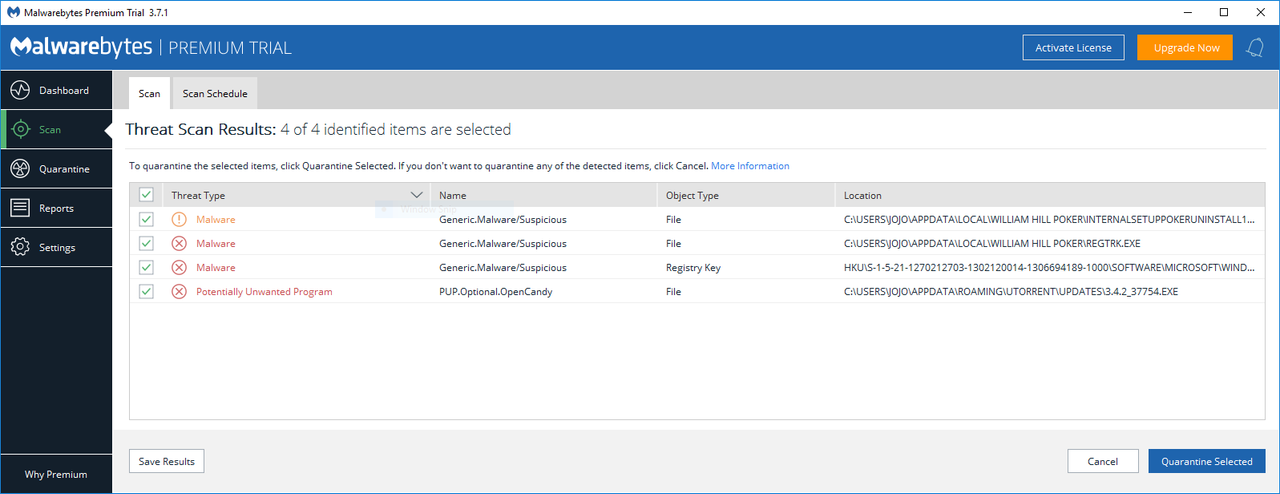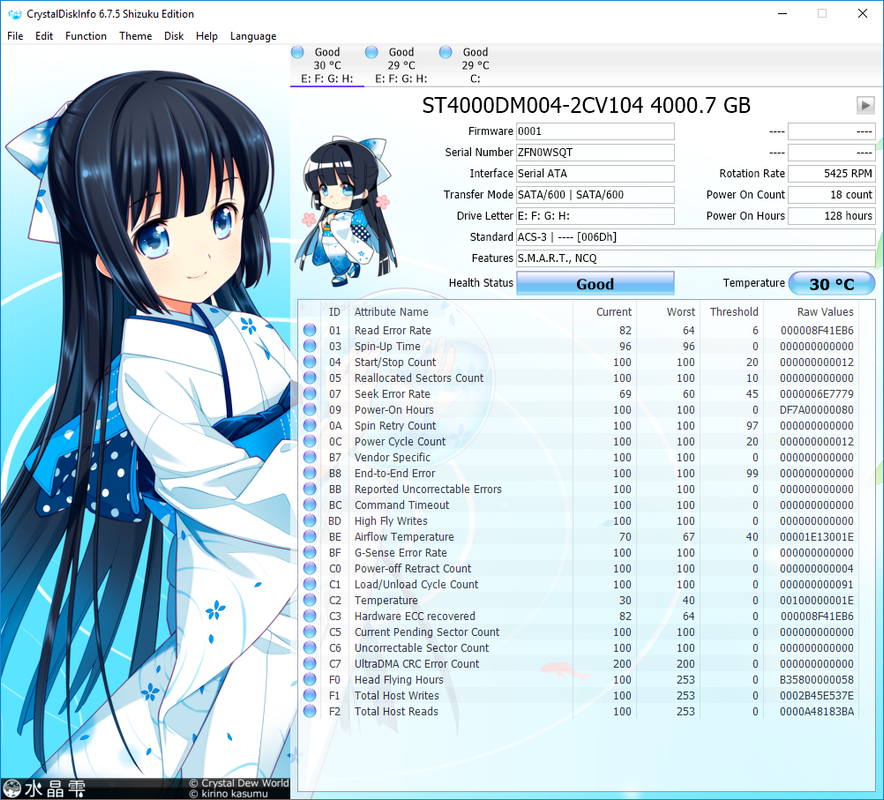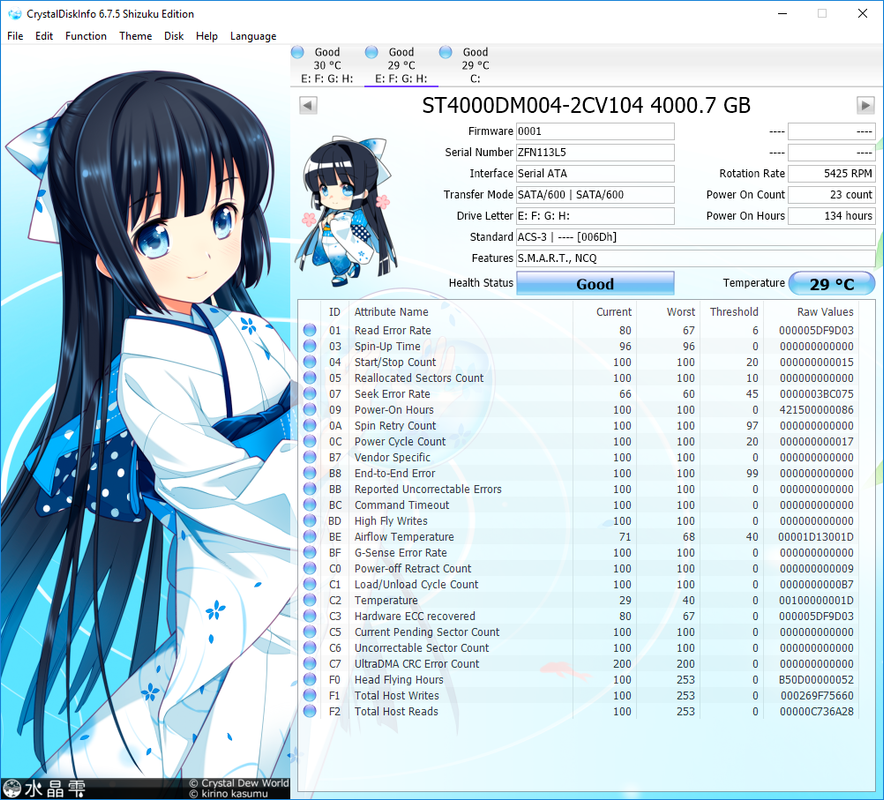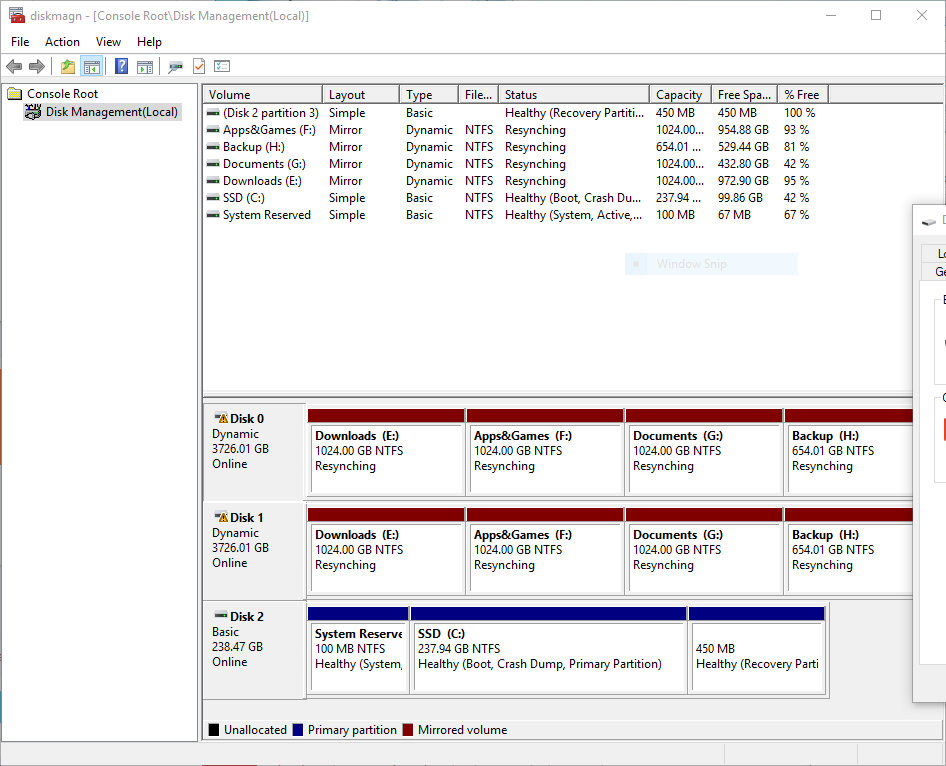Hello everyone.
A common issue, I know. And I have tried all the commonly suggested solutions.
I was wondering if the RAID 1 set-up I created could be the cause of this.
I have used the Win10 built-in wizard to create a Raid 1 (mirroring) 4 partition space.
Today I noticed some weird clicks and noises coming from my desktop.
The HDDs are brand new Seagate BarraCuda 4TB 3.5" SATA HDD/Hard Disk Drive ST4000DM004/DM004 .
I used to have the same problem with the previous data single HDD that eventually failed.
Avira does not detect any virus.
Check the screenshot below: Disk 0 is 100% active time reading at a speed of about 12 to 18 MB/sec. Disk 1 is at 8-10% active time with a matching writing speed of about 12 to 18 MB/sec.
The process that is causing this is System.
Any suggestions?
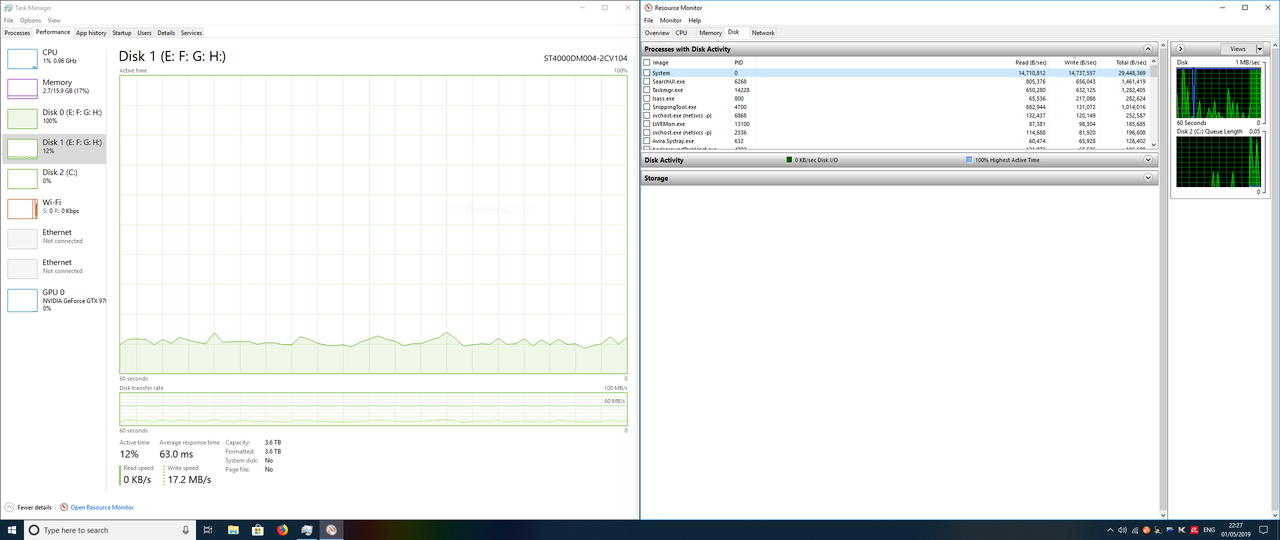
A common issue, I know. And I have tried all the commonly suggested solutions.
I was wondering if the RAID 1 set-up I created could be the cause of this.
I have used the Win10 built-in wizard to create a Raid 1 (mirroring) 4 partition space.
Today I noticed some weird clicks and noises coming from my desktop.
The HDDs are brand new Seagate BarraCuda 4TB 3.5" SATA HDD/Hard Disk Drive ST4000DM004/DM004 .
I used to have the same problem with the previous data single HDD that eventually failed.
Avira does not detect any virus.
Check the screenshot below: Disk 0 is 100% active time reading at a speed of about 12 to 18 MB/sec. Disk 1 is at 8-10% active time with a matching writing speed of about 12 to 18 MB/sec.
The process that is causing this is System.
Any suggestions?



